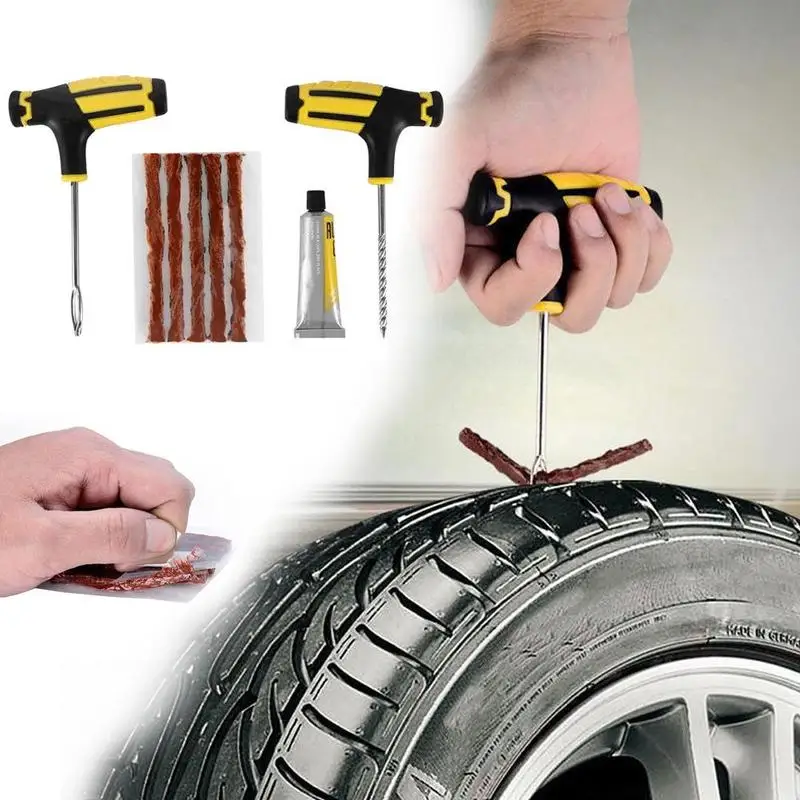So, you have a flat tire or one that’s leaking air. It’s not the end of the world. Luckily there are safe and cost-effective ways to properly repair most tire punctures. The purpose of this article is to show you the difference between a safe, permanent repair and a temporary string, plug or patch repair.
According to the National Highway Traffic Safety Administration (NHSTA) and the Tire Industry Association (TIA), the only method to properly repair a tire puncture is to fill the injury with a repair stem and back the stem with a repair patch. This is commonly known as a combination repair or a patch/plug repair.
Patch/plug repairs are most often performed using a one-piece repair unit that combines the repair stem and cap (or patch) into one unit. However, special circumstances may require the use of a two-piece combination repair (ex. If the angle of the puncture exceeds 35 degrees). The repair is then permanently bonded to the inside of tire and through the injury channel using a cold, chemical vulcanizing process.
The repair essentially becomes part of the tire, creating an air-tight seal that keeps air in and moisture and contaminants out (more on this procedure below).
Emergency roadside plug repairs are NOT intended to be a permanent tire repair. Plugs and string repairs are designed to get you back up and rolling long enough to get home or to the nearest service center to perform a proper tire repair.
The common misconception with plug and string repairs is that because they hold air, they are safe to use. While it is true that many plug repairs do a great job of keeping air in the tire, that’s only part of the equation. Because they’re not completely sealing the injury, plug repairs may allow air and moisture to penetrate the body of the tire. Over time, this could lead to a dangerous (or even deadly) blowout.
A Patch-Only Tire Repair Leaves Your Tire Susceptible to DamageA tire repair that uses only a patch is also NOT considered proper or safe.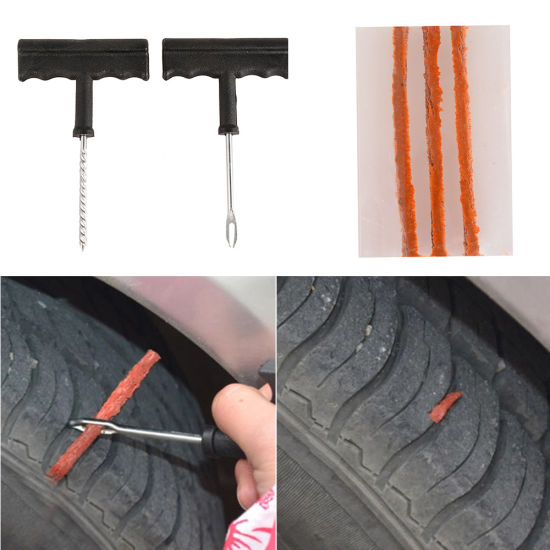 A properly installed patch will do a great job of allowing the tire to hold air. However, similarly to the plug-only repair, the patch does not fill the injury channel. Therefore, air and moisture could seep into the tire from the tread surface and eventually damage the tire.
A properly installed patch will do a great job of allowing the tire to hold air. However, similarly to the plug-only repair, the patch does not fill the injury channel. Therefore, air and moisture could seep into the tire from the tread surface and eventually damage the tire.
Only a proper patch/plug repair completely seals the puncture from inside the tire and through the entire injury channel. There are a few extra steps necessary to perform a proper tire repair in accordance with industry guidelines. We’ve developed a simple acronym to help organize and remember the steps: R.E.P.A.I.R.
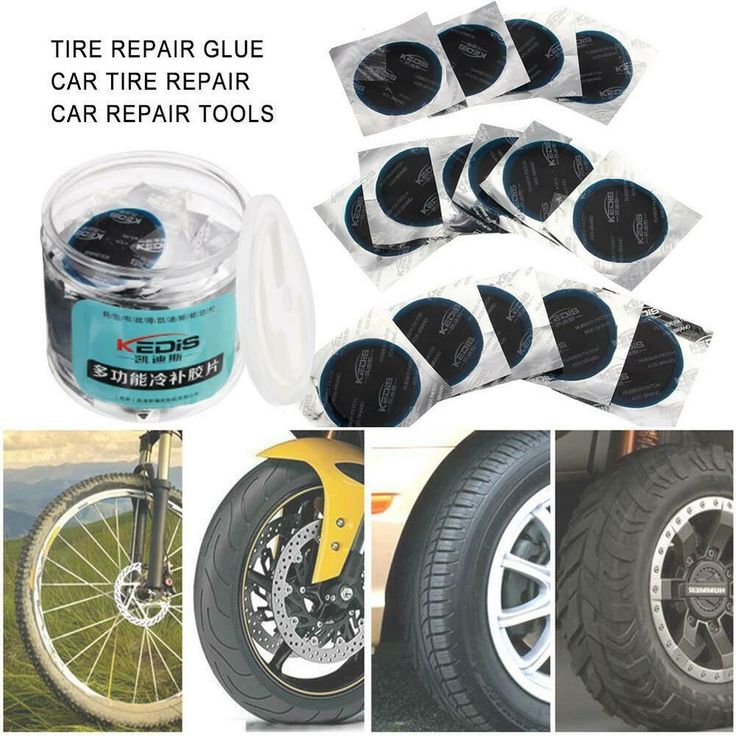 It can also be determined if the puncture did any significant damage to the cords or belts.
It can also be determined if the puncture did any significant damage to the cords or belts.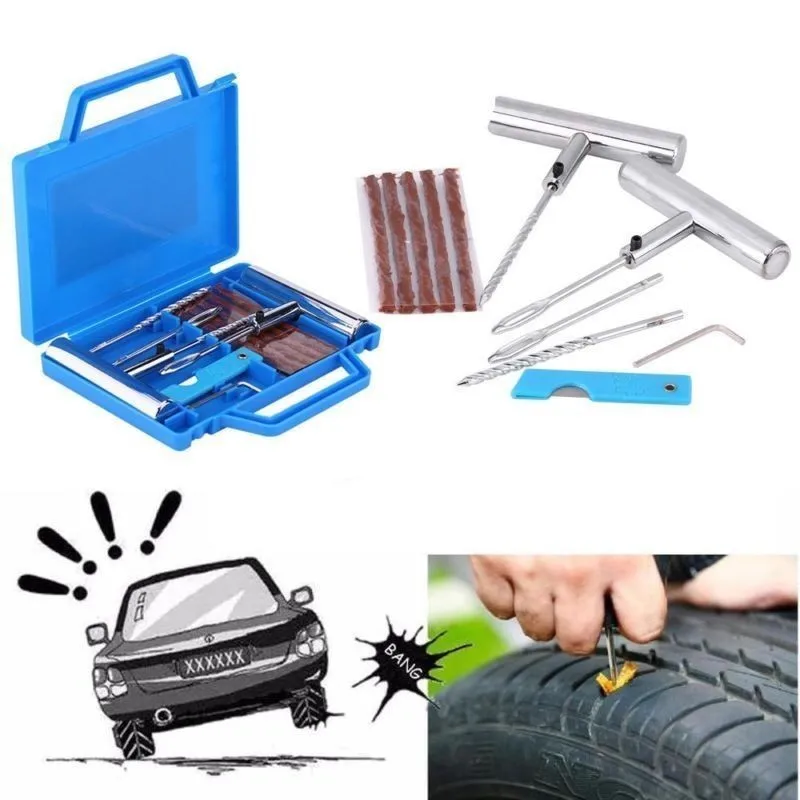 The over-buffed area of the inner liner is treated with a thin layer of rubber sealant, and the excess repair is trimmed to approximately ¼” above the tread surface.
The over-buffed area of the inner liner is treated with a thin layer of rubber sealant, and the excess repair is trimmed to approximately ¼” above the tread surface.There are a number of factors that may determine whether or not your tire is safe to repair. These factors fall into three main categories:
 Excessive wear, casing separation, impact damage and other conditions may make it unsafe to properly repair your tire. For a more comprehensive list of repairable vs. non-repairable conditions visit our blog Can Your Tire Be Repaired?
Excessive wear, casing separation, impact damage and other conditions may make it unsafe to properly repair your tire. For a more comprehensive list of repairable vs. non-repairable conditions visit our blog Can Your Tire Be Repaired?The occasional flat or leaky tire is an unavoidable part of life. But, taking shortcuts to repair it can be dangerous to you and your passengers. Take the time and do the research to do the job right and/or find a reputable tire repair shop trained in proper tire repair procedure.
Calculate Out-The-Door Price
close
× ‹
All fields are required
Submodel
Select TPMS OptionTPMSTPMS: NOTPMS: YES
WHAT IS TPMS?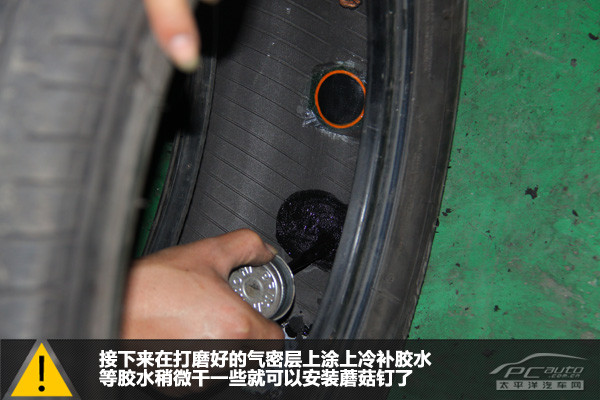 ">What's this?
">What's this? Enter Zip Code WHY DO WE ASK ABOUT YOUR ZIPCODE?
ZIP code is needed for local pricing.">Why?
Cross Section
Aspect Ratio
Rim Diameter
Enter Zip Code Why?
7980 S Broadway
Littleton, CO
303.515.7308
Most stores are open nights and weekends
Directions
Store Hours:
| Day(s) | Hours |
|---|---|
| MON-FRI: | 7:00am-7:00pm |
| SAT: | 7:00am-6:00pm |
| SUN: | 9:00am-5:00pm |
Store Details Change Store Find a Store
Schedule An AppointmentLearn more about Oil Changes
7980 S Broadway
Littleton, CO
303.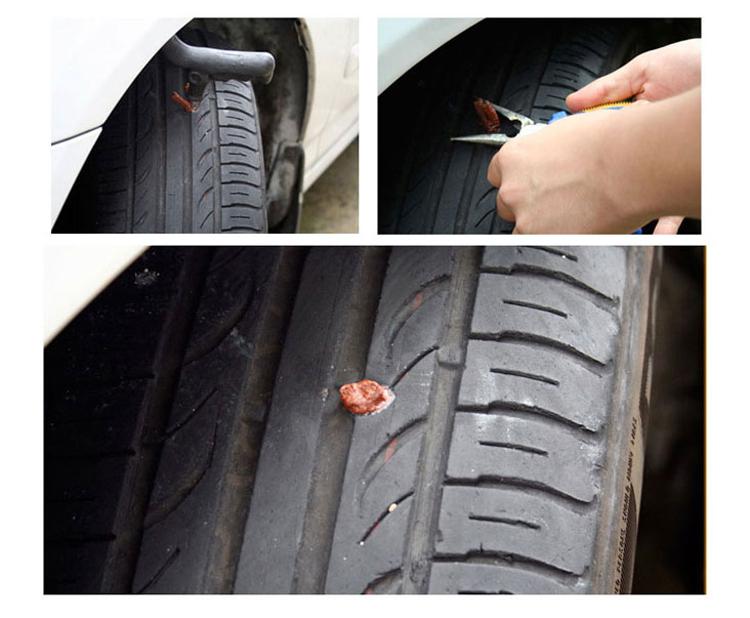 515.7308
515.7308
Most stores are open nights and weekends
Directions
Store Hours:
| Day(s) | Hours |
|---|---|
| MON-FRI: | 7:00am-7:00pm |
| SAT: | 7:00am-6:00pm |
| SUN: | 9:00am-5:00pm |
Store Details Change Store Find a Store
Schedule An AppointmentLearn more about Brake Service
All fields are required
Engine
Enter Zip Code Why?
All fields are required
Submodel
Enter Zip Code Why?
FIRESTONE HAS BEEN THE NATION'S LEADING TIRE PROVIDER FOR MORE THAN A CENTURY.
It's a tough road out there, and your tires bear the brunt of potholes, broken glass, nails, screws, and anything else that can puncture a tire. Firestone Complete Auto Care's flat tire repair services are the best in the business. We've been repairing tires since 1926, and we take pride in repairing America's tires. When tire damage strikes, come to Firestone Complete Auto Care–the tire repair shop you can trust.
If you suspect something is wrong with your vehicle's tires, don't hesitate to come into a Firestone Complete Auto Care near you. If your Tire Pressure Monitoring System (TPMS) light is on, you've hit something on the road, your tire is losing air, or maybe something just doesn't feel quite right, bring it in. One of our expert technicians will take a look and tell you if you need to repair or replace your tires.
Driving on a damaged tire can lead to additional (and more costly) rim damage and repairs, so it's best to have your tires examined at the first sign of trouble.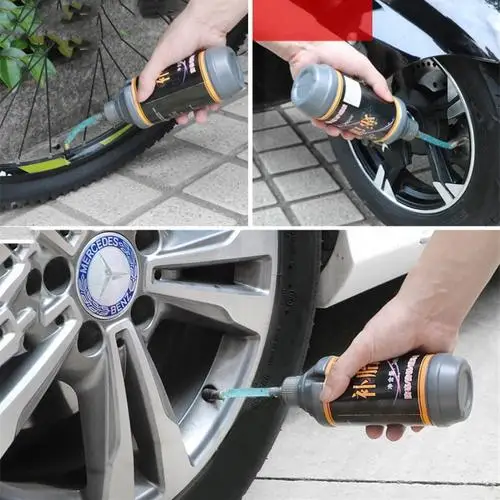 The solution might be as simple as needing one of our patch plugs if the tire puncture is addressed early on. In other cases, a leaking valve stem or valve core may need to be replaced with a new one or the TPMS sensor needs to be reprogrammed or replaced. Visit your nearest Firestone Complete Auto Care, and we'll take care of you and your vehicle tire repairs.
The solution might be as simple as needing one of our patch plugs if the tire puncture is addressed early on. In other cases, a leaking valve stem or valve core may need to be replaced with a new one or the TPMS sensor needs to be reprogrammed or replaced. Visit your nearest Firestone Complete Auto Care, and we'll take care of you and your vehicle tire repairs.
Schedule An appointment
Tire Repair & Patching/Plug
If your tires still have life left in their tread and are not over 10 years old, Firestone Complete Auto Care maybe be able repair or patch & plug them to get you back on the road quickly. Keep in mind not all tire damage can be patched if the puncture is too big.
Tire Replacement
Over time, the tread on your tires wears down, leading to compromised traction on the road and potentially dangerous driving conditions. Tires generally need to be replaced every 25,000 to 50,000 miles, depending on vehicle manufacturer recommendations and driving habits.
Tire Rotations & Balancing
When you have your tires rotated, you help increase the life of your tires by helping reduce uneven wear. Most vehicle manufacturers recommend a tire rotation about every 5,000 miles or at the manufacturer-recommended mileage. Tire balancing helps ensure weight is evenly distributed around your tires. It's necessary about every 5,000 miles or as recommended by your manufacturer. Balancing can lead to a smoother ride, less tire wear, and reduced strain on the drivetrain. When you think tire balancing, think safe, smooth, and efficient driving.
Wheel Alignments
It's best to have your alignment checked every 6,000 miles or twice a year. Even one misaligned wheel can cause the steering wheel to be off center and can lead to premature wear and tear on your vehicle over time. Keeping everything properly aligned ensures a smoother ride for you and a longer life for your tires.
Flat Repair
A flat or leaking tire can leave you stranded on the side of the road or lead to a situation where you lose control while driving. Take care of flat or leaking tires as early as possible to extend tire lifespan and ensure your tire doesn't leave you stranded.
Schedule An Appointment
All fields are required
Engine
Zip Code Entry Why?
Flat tires rarely happen at ideal times. Let Firestone Complete Auto Care help you with these answers to frequently asked flat tire questions.
To ensure a safe drive that doesn’t damage your rims or create more expensive repairs, change your flat tire with your spare tire before coming into your local Firestone Complete Auto Care center for flat tire repair.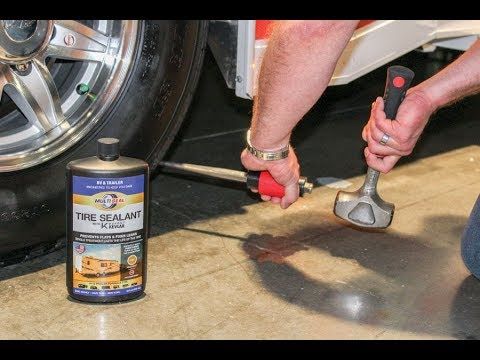
It’s tempting to replace just the tire that's damaged, but replacing one tire at a time can present challenges down the road since the one tire will have a different tread depth and thus different accelerating, braking, and cornering abilities than all of the others.
Few things are more inconvenient than a flat tire —except back-to-back flat tires. Learn the reasons why you keep getting flat tires and what you can do to help prevent flat tires from deflating your spirits!
If your vehicle hits a pothole in the road, you may experience steering and suspension system misalignment and/or damage, tire punctures, bent rims, and more. When your vehicle experiences a sudden jolt from a pothole run-in, timely inspection is highly recommended.
Pothole damage may not be obvious right away, but it can wreak havoc on your entire car if it’s not addressed quickly and fixed right the first time.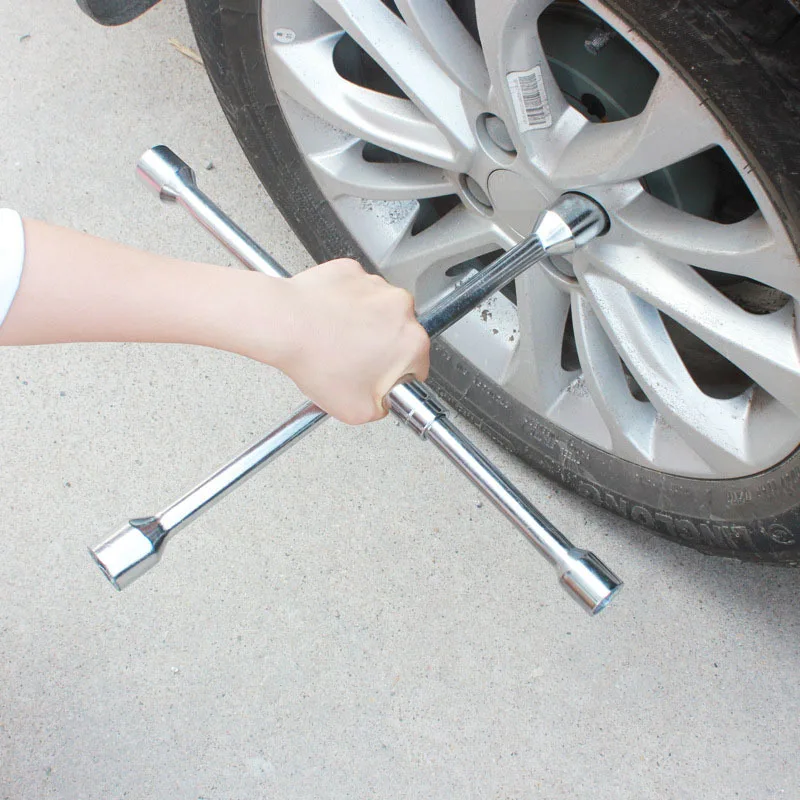 If you've had a recent run-in with a pothole, head to your local Firestone Complete Auto Care for a Complete Vehicle Inspection to check for any issues.
If you've had a recent run-in with a pothole, head to your local Firestone Complete Auto Care for a Complete Vehicle Inspection to check for any issues.
A tire plug is a quick fix for a tire that's leaking air from a nail or similar object that has punctured the tire. A tire plug fills the hole of the tire but is not reliable without a tire patch and not recommended to use alone. A patch is applied to the inside of the tire to further prevent an air leak and helps hold the plug in place. This allows a tire with ample useful life left in it to hold air reliably and keep you on the road for longer.
Run flat tires allow you to drive on a flat tire for a limited time with lesser risk than non-run flat tires. A Run Flat tire could be repaired if a nail or object is caught before tire damage occurs. However, if the tire is permanently damaged, it is required to replace a Run Flat tire with a new one.
The Tire Pressure Monitoring System light will illuminate if tire pressure is too low or part of the TPMS system has malfunctioned. Important TPMS warning light behavior:
Looking for the closest flat tire repair shop? Come to Firestone Complete Auto Care for a tire plug & patch or other tire repair service today!
Read More
Regular tire rotations can help prevent uneven tread wear and help your tires last longer. Schedule a tire rotation appointment at a Firestone Complete Auto Care near you today.
Schedule a tire rotation appointment at a Firestone Complete Auto Care near you today.
Read More
Knowing when to replace tires is as easy as measuring tire tread depth. Learn more about this important measurement and visit Firestone Complete Auto Care!
Read More
Tires
Discover the most common reasons behind the slow leaks in your vehicle's tires. Learn how to diagnose this issue and find a permanent solution for your tires.
Read More
Tires
Need a fresh set of winter tires but don’t know what to look for? We have you covered. Read on to learn about tread patterns, tire compounds, ratings, and more!
Read on to learn about tread patterns, tire compounds, ratings, and more!
Read More
Tires
What is backspacing in wheels? What about offset? Are they the same or completely separate things? Firestone has the answers you're looking for. Learn more.
Read More
LOAD 3 MORE
SHOWING 6 OF 12
View More Articles
{{storeNumber}}
{{storeName}}
{{link-icon "Call Us" mobileCallLink null "call-cta"}} {{link-icon "Directions" directions "_blank" "directions-cta"}}
{{address}}
{{city}}, {{state}} {{zip}}
{{#if activeFlag}} {{#ifCond mystore "or" myPreferredStore}} {{#ifCond storeType 'eq' "TPL"}}
*Call store for appointment {{phone}}
{{else}} {{#if onlineAppointmentActiveFlag }}
{{#if myPreferredStore}}
{{else}}
*Call store for appointment {{phone}}
{{/if}} {{/ifCond}} {{else}} {{#ifCond storeType 'eq' "TPL"}}
*Call store for appointment {{phone}}
{{else}}
Schedule Appointment {{#if onlineAppointmentActiveFlag}} {{else}}
*Call store for appointment {{phone}}
{{/if}}
{{/ifCond}} {{/ifCond}} {{else}}
*Temporarily Closed Due To: {{temporarilyClosedReason}}
{{/if}} {{#if isMilitaryStore}}
*This location is on an active US military base.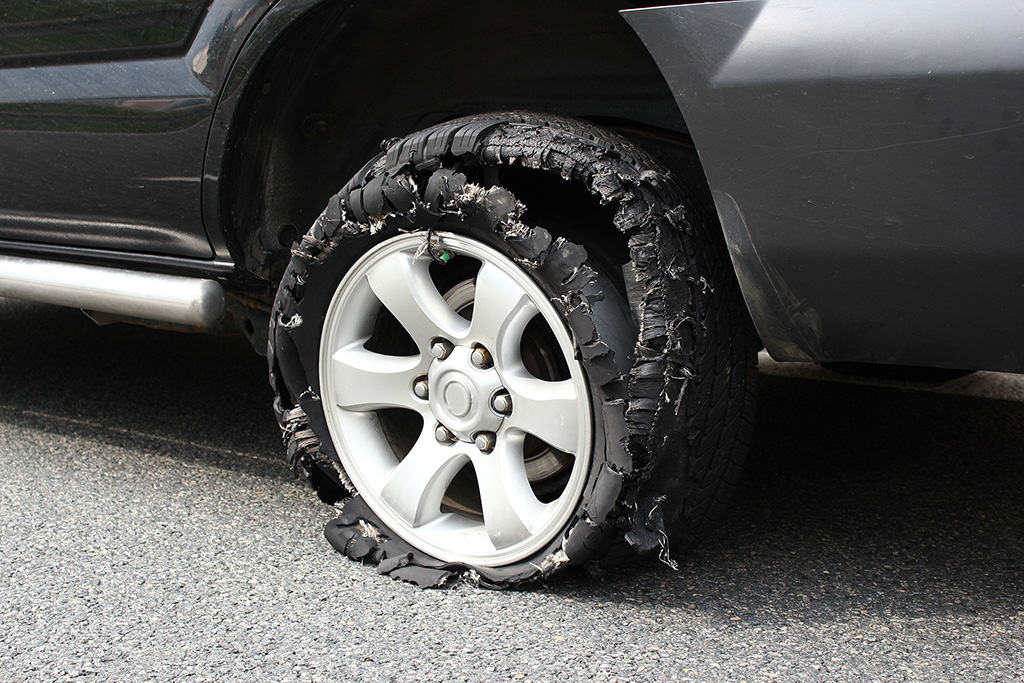 You may need military ID to access the location.
You may need military ID to access the location.
{{/if}}
{{#ifCond count 'eq' "3"}} Show More Stores {{/ifCond}}
Is it possible to repair such a tire and continue to operate the car on it? This question is asked by everyone who has ever encountered a similar problem. The question is ambiguous, but solvable.
At first glance, a bearing is a very simple part of a machine. But in reality this is not so. A car tire is a rather complicated structure. In the 21st century, a puncture in her teeth, put a tourniquet and drive calmly, but when we are dealing with a side cut, this is at least unpleasant. Triple resentment arises for the whole world when damage is applied to a completely new tire, and the tread has not yet had time to break in.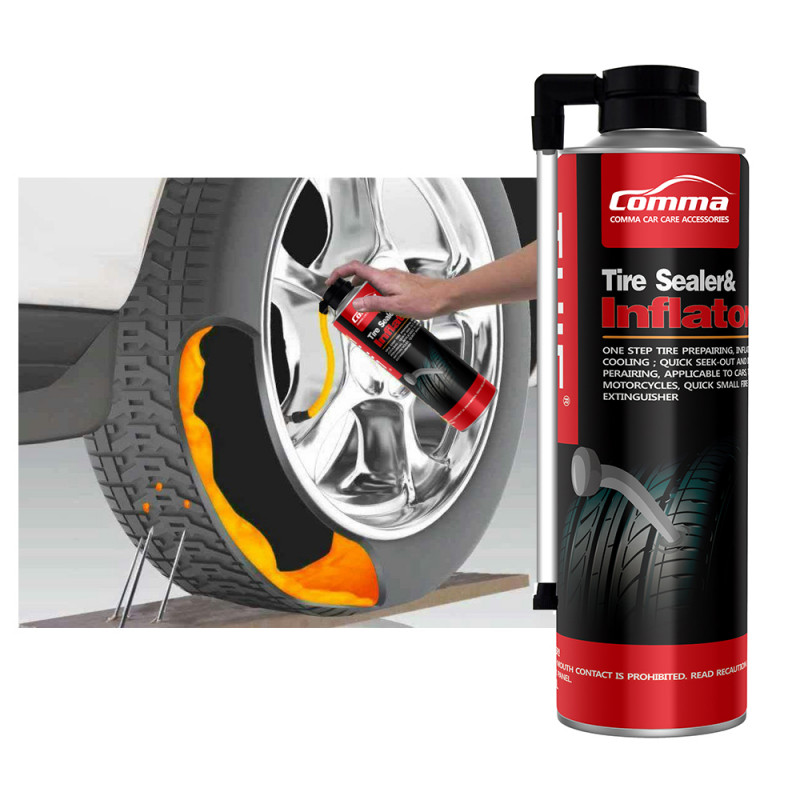 How can it be anyway? Repair and move on? nine0003
How can it be anyway? Repair and move on? nine0003
It is not at all necessary that the side cut was caused by road irregularities or that the rebar protruding from the pavement was the impetus (but this can also affect). The guys from the neighboring yard, the so-called envious ill-wishers, or you have taken someone else's place under the sun in the parking lot can also cut the rubber. Yes, yes, the world is cruel, and drivers are also unkind.
If a cut is formed on the tread, at the top of the tire, it can be easily repaired, but a side damage requires painstaking and not pleasant repair. Because it is a section cut along the length, cutting the tire into two parts. And if it is wrong to “repair” the sore spot, driving a car with such a wheel will pose a threat to the driver and passengers. nine0003
Why are cuts dangerous?
The tire is not just a piece of welded rubber, it is a complex structure. At the moment, there are two types: radial and diagonal structures.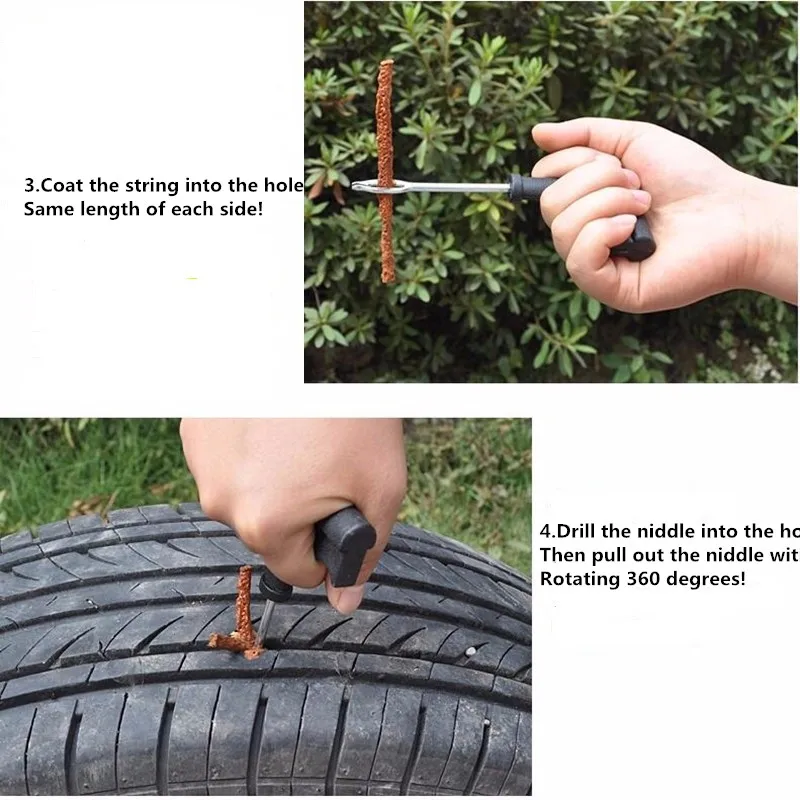 Note that today the radial ones are the leaders in sales, which have practically ousted the opposite type from the market.
Note that today the radial ones are the leaders in sales, which have practically ousted the opposite type from the market.
Making a tire is a labor intensive process. And it seems - everything is very simple! It wasn't there! If you take a piece of ordinary rubber, install it on a disk and pump it with air, it will burst under the weight of the car. The structure of any tire implies several power frames (cords):
First, the power cord is assembled, which will later be filled with rubber. Thanks to this structure, unique strength is achieved both on top and on the sides. Therefore, a car tire is an extremely dense and durable structure. It cannot burst and takes on huge loads. But with a side cut, the cords are torn and the damaged area becomes a weak point, because the natural connection between the metal and fabric cord is broken. Some use the simplest household method - sealing a hole, but such a "resuscitation" will not bring much effect.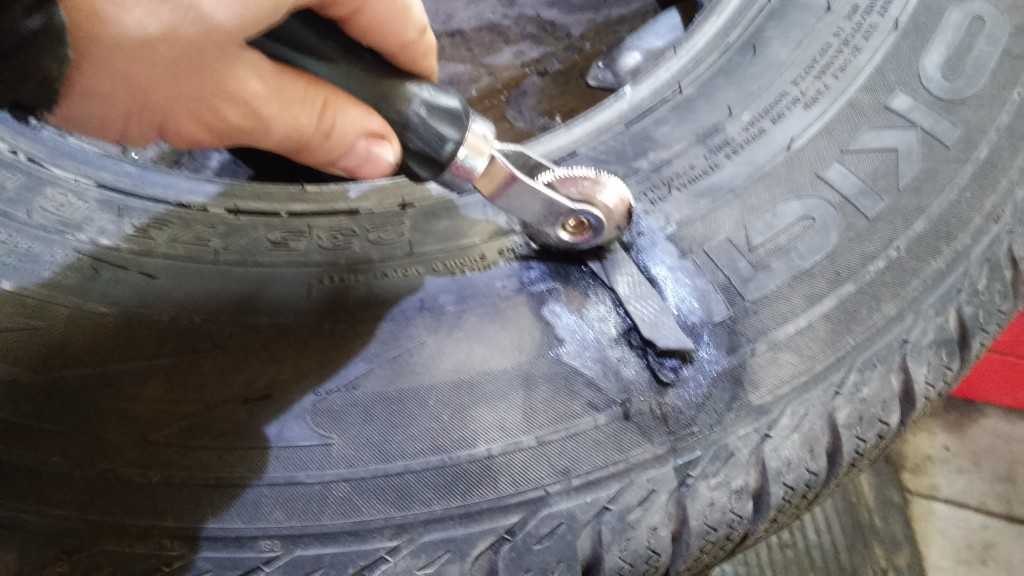 It is worth getting into the hole with a sore spot, as the glued area bursts or diverges again. nine0003
It is worth getting into the hole with a sore spot, as the glued area bursts or diverges again. nine0003
Is it possible to repair a side cut?
Theoretically possible, but this process is not at all fast and expensive. To begin with, think - is it worth messing with a damaged tire, is it worth it? If there is no point in reconstruction, the tire is as old as the world, the mileage is many thousands, and the tread has worn off, make a decision without hesitation. The fact is that a quality repair will cost about the same amount that you would pay for a new tire. But if you are a happy owner of expensive and completely unworn tires, it is more expedient to turn to repair. Weigh all the pros and cons and make the final decision. nine0003
Miracles of technology: thermal patch
The patch is a layer of rubber with cords inside. Pressed rubber is used, which does not have pores, this already indicates the absence of air. This material resists tire deflation and is effective in combating cuts.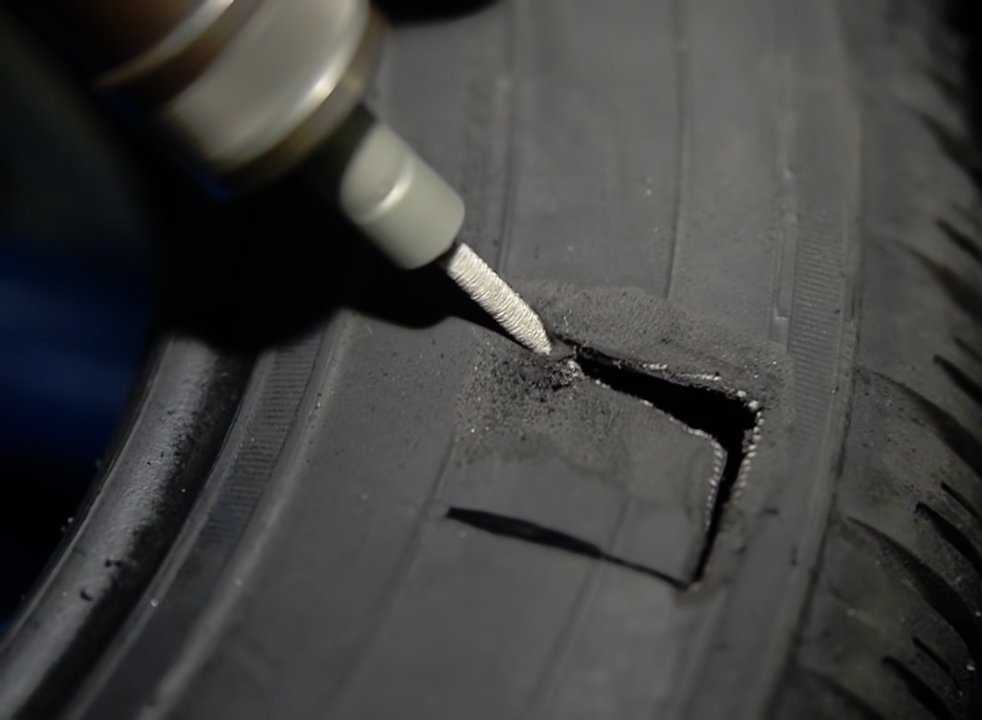 To prevent the cut from spreading further, the rubber is equipped with a fabric insert that holds the cut. There are several methods for applying the patch:
To prevent the cut from spreading further, the rubber is equipped with a fabric insert that holds the cut. There are several methods for applying the patch:
Just for lateral damage, the second method is used, it is it that is effective in sealing a broken tire. The damaged area is cleaned from both sides - from the inside and outside. Then, unnecessary dirt is removed with a vacuum cleaner, then treated with a special rubber cleaner and a patch is applied from the inside. Glue is applied on the front side and the problem area is sealed with raw rubber. With the help of a vulcanizer, cuts are pressed from above and below. Thus, the cut is securely sealed. nine0003
Is it allowed to ride?
Despite the modern technology of car rubber restoration, you should always be on the lookout! Remember that problematic wheels are not put forward (especially for a front-wheel drive car).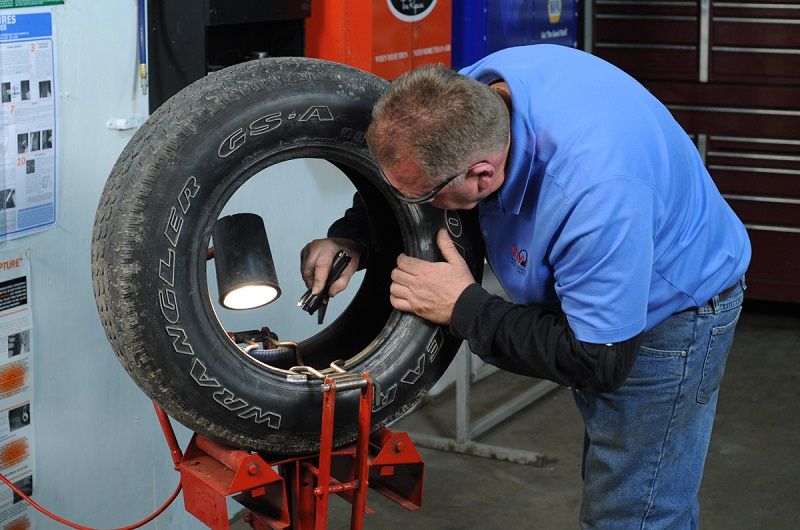 Do not forget that a broken tire at high speed will instantly reduce controllability and you will lose control of the car. This is dangerous! Please note that even the most advanced methods of rubber reconstruction will not return tires to 100% of their former properties.
Do not forget that a broken tire at high speed will instantly reduce controllability and you will lose control of the car. This is dangerous! Please note that even the most advanced methods of rubber reconstruction will not return tires to 100% of their former properties.
We draw conclusions: you can ride! Only you need to put the repaired wheel at the back. And forget about racing on the roads - high speed is now dangerous. Sensibly evaluate the situation, because sometimes buying a new wheel can save not only the car, but also the life of a person. nine0003
Hello everyone, today I will tell you how to repair a tire side cut yourself. With a car on the road, there are various troubles. Tire damage is a common problem to deal with. Nails or sharp small objects are familiar to everyone, however, cuts are a much worse problem. Wheel cuts are divided into central and lateral. On the way, with such a nuisance, especially on tubeless tires, you have to deal with it yourself.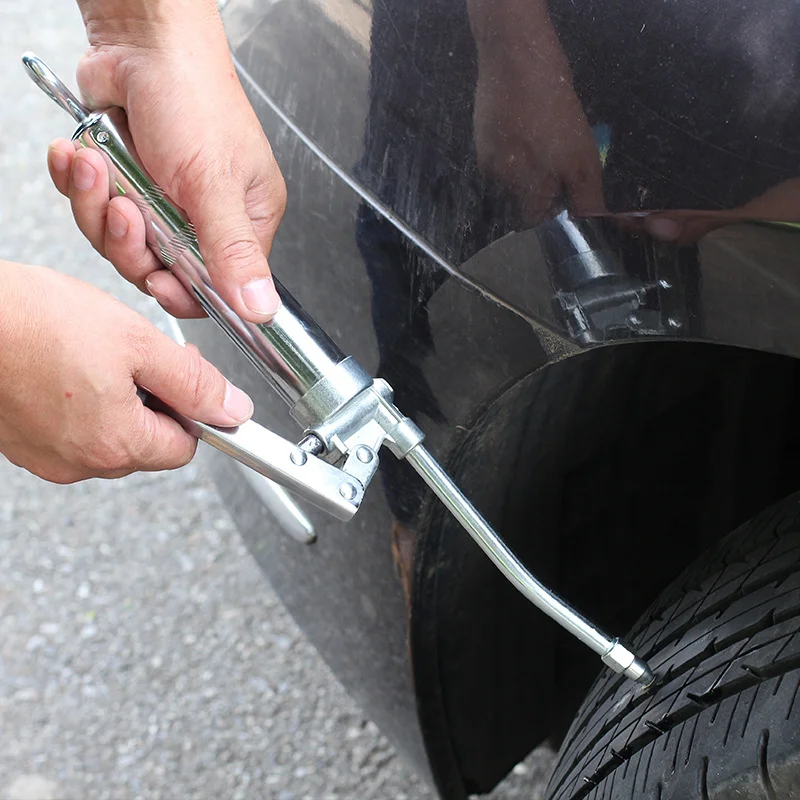 Of course, in such a case, there is a spare wheel, however, there is also a law of meanness, when the spare wheel is pierced and there is nothing to replace the tire with. Therefore, knowing how to repair a side cut yourself will come in handy. nine0003
Of course, in such a case, there is a spare wheel, however, there is also a law of meanness, when the spare wheel is pierced and there is nothing to replace the tire with. Therefore, knowing how to repair a side cut yourself will come in handy. nine0003
Content
This impaired violation of the integrity of the wheel is not on the working surface (that is being driven by what cats roads), but from the sides. Can this damage be repaired? The danger of a side cut is that such damage destroys not only the rubber but also the metal cord. And the violation of the cord leads to the loss of stability of the entire structure of the tire. Do not confuse with side cracks, with cracks the cord remains intact, and the rubber structure is only partially damaged, the same if the cut is not through. With a side cut, the damage is more difficult.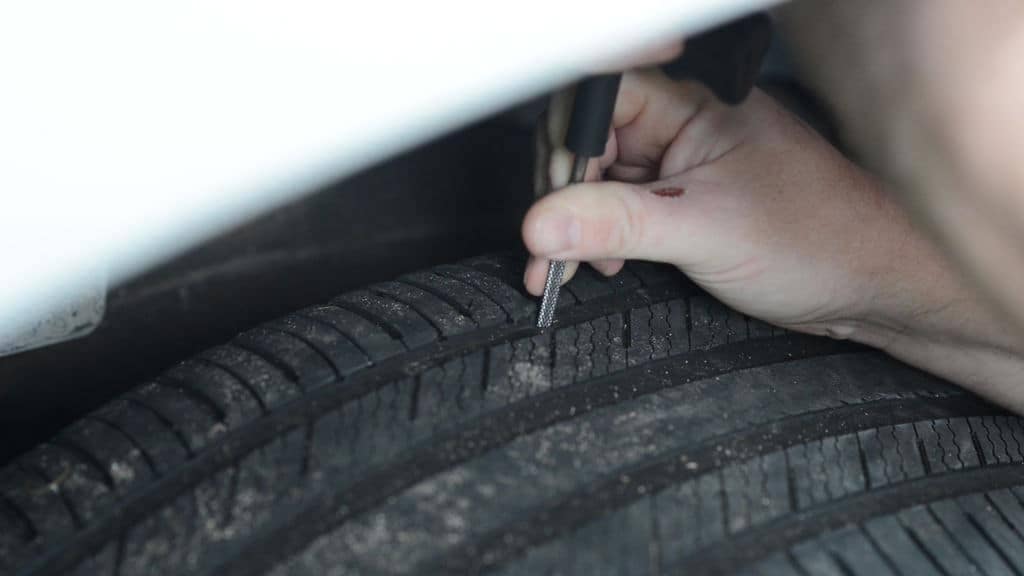 nine0003
nine0003
Sidewall puncture, not a cut, usually the cord is practically undamaged, but it also needs to be repaired.
All wheel damages are divided into those that can be repaired, and after which the tires cannot be repaired, repair or replacement is determined by the size of the cut.
Longitudinal lateral damage of the tubeless wheel not more than 35 millimeters, can still be repaired, a cut of a greater length requires a tire replacement. Transverse lateral damage to a tubeless wheel can be corrected if the length does not exceed 25 millimeters. With a longer transverse side cut, the slope must be changed. Is it possible to seal a longer hole? It is possible, only the patch will either not hold at all, or will last a few minutes. nine0003
If the wheel has a chamber, then boldly add 10 millimeters to the allowable cut size.
How do I repair a cut on the way?
Remember an important rule, to repair a punctured wheel, you must have a kit with cold welding, patches, glue or raw rubber in your trunk, which allows you to repair the wheel yourself.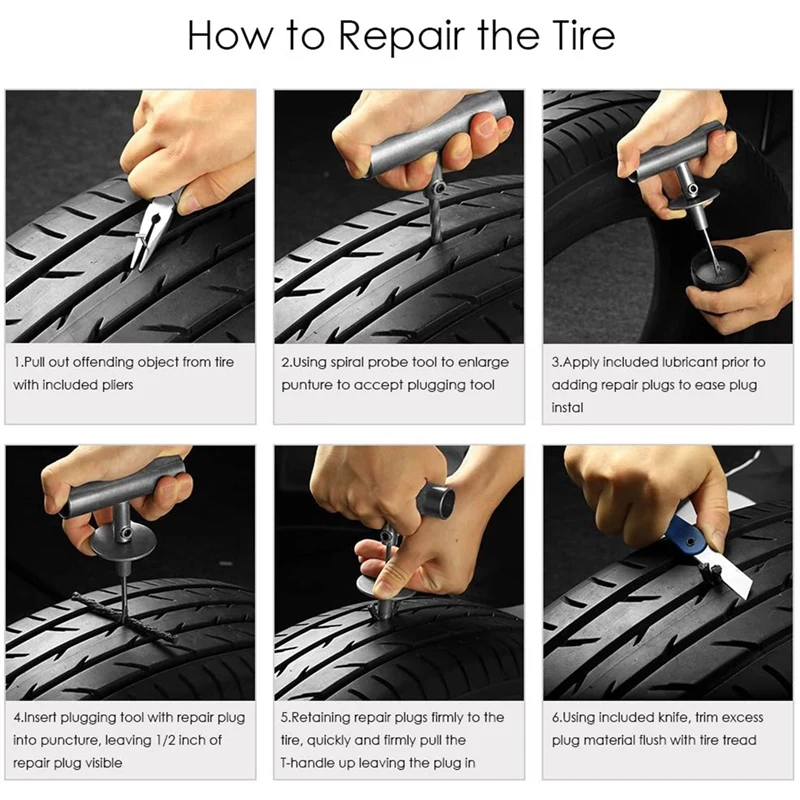 This set can be purchased at a specialized store. Without such a set, repairing a punctured tire in the field is impossible. The cut on the side of the tire, that is, not through, allows you to seal it and ride on without problems. nine0003
This set can be purchased at a specialized store. Without such a set, repairing a punctured tire in the field is impossible. The cut on the side of the tire, that is, not through, allows you to seal it and ride on without problems. nine0003
What to do with this damage? The side cut is either repaired manually or at a service station where there is a tire repair. At the tire repair, everything will be done for you and without your participation, so it makes no sense to tell the process. But knowledge of repair in the field will definitely come in handy for you, so stock up on a kit for such a procedure. The procedure and methods of repair are also suitable for truck tires, only here damage is allowed for no more than 10 cords, if more than 10 cords of a truck wheel are damaged, it makes no sense to repair it. nine0003
To seal a side cut, there are the following methods:
This is a do-it-yourself repair in the field, it is not always possible, since you also need a battery-powered heating hair dryer, or another heater (soldering iron and others) that can run on batteries.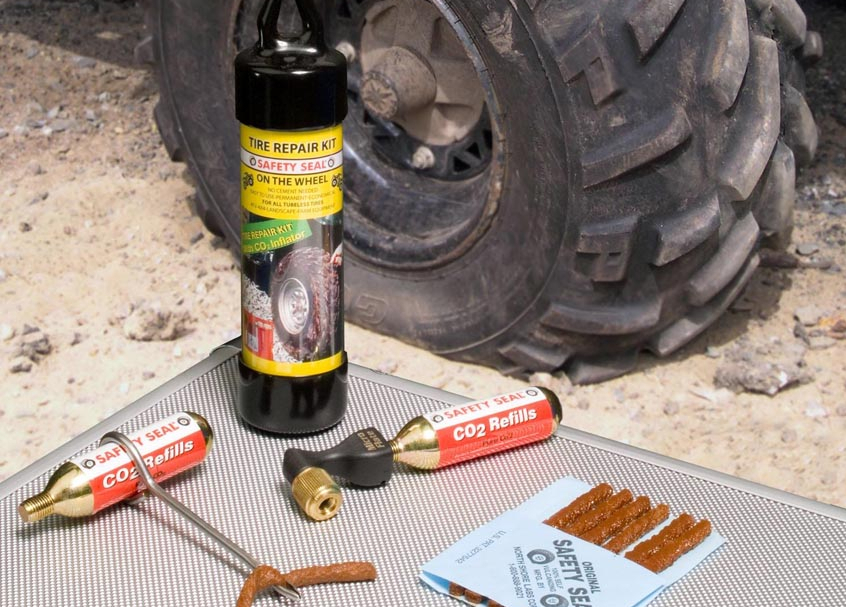 You can really make a fire and heat a metal object on it, which you can then use as a soldering iron. This repair is called hot vulcanization. When heated, raw rubber boils and swells like lava from an erupting volcano. After warming up, it solidifies, like lava. nine0003
You can really make a fire and heat a metal object on it, which you can then use as a soldering iron. This repair is called hot vulcanization. When heated, raw rubber boils and swells like lava from an erupting volcano. After warming up, it solidifies, like lava. nine0003
Instead of a soldering iron, small gas cylinders are now sold, they are also convenient for heating something in the field. Therefore, along with the vulcanization kit, have such a can. Cooking a tire with a side cut goes in the following sequence:
The tire will have to be removed and disassembled. Clean the damaged area with sandpaper, and degrease with gasoline. After that, fill the slot with raw rubber from the repair kit. Cover the damage on both sides with a film and heat it to brew using a heating device. After the patch has hardened, it is necessary to assemble the wheel and pump it up, if the air does not poison, you can put it back and drive carefully. In time, manual vulcanization takes 1-2 hours.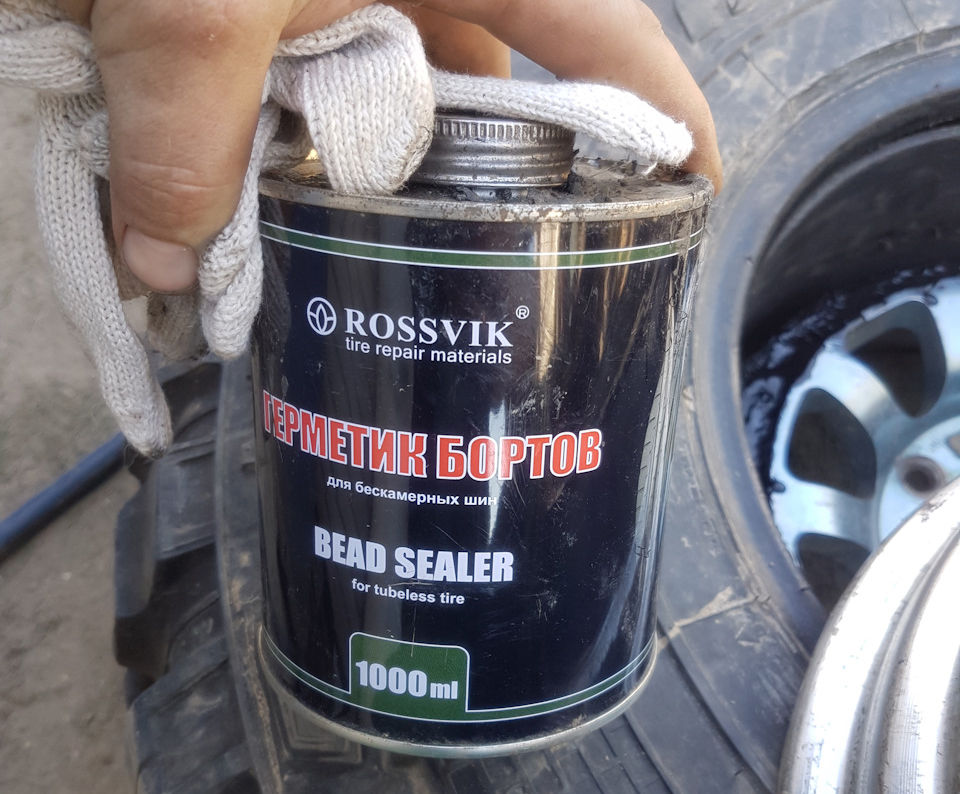 nine0003
nine0003
Do-it-yourself tubeless tire repair does not require heating devices. Tire patches should be in the repair kit, special glue is also sold with them. Together with the repair kit, you need to carry a clamp, with which the patches are pressed tightly on both sides. To perform repairs, the wheel will also have to be removed and disassembled. Around the cut, the surface must be cleaned with sandpaper, and then degreased, gasoline is suitable for this purpose. nine0003
How to make matching patches - cut patches to size 2-3 mm wider than the slot. Then you need to apply glue and press the patch firmly. Patches are pressed for 1-2 hours, in the absence of a clamp, you will have to glue one at a time, pressing down with a heavy object. After assembling and inflating the wheel, if there is no air leakage, then you can move on.
For a tubeless tire, there is another option for repairing a small hole with your own hands. The stores sell kits with a rubber band, an awl and a metal knob for repairing breakdowns.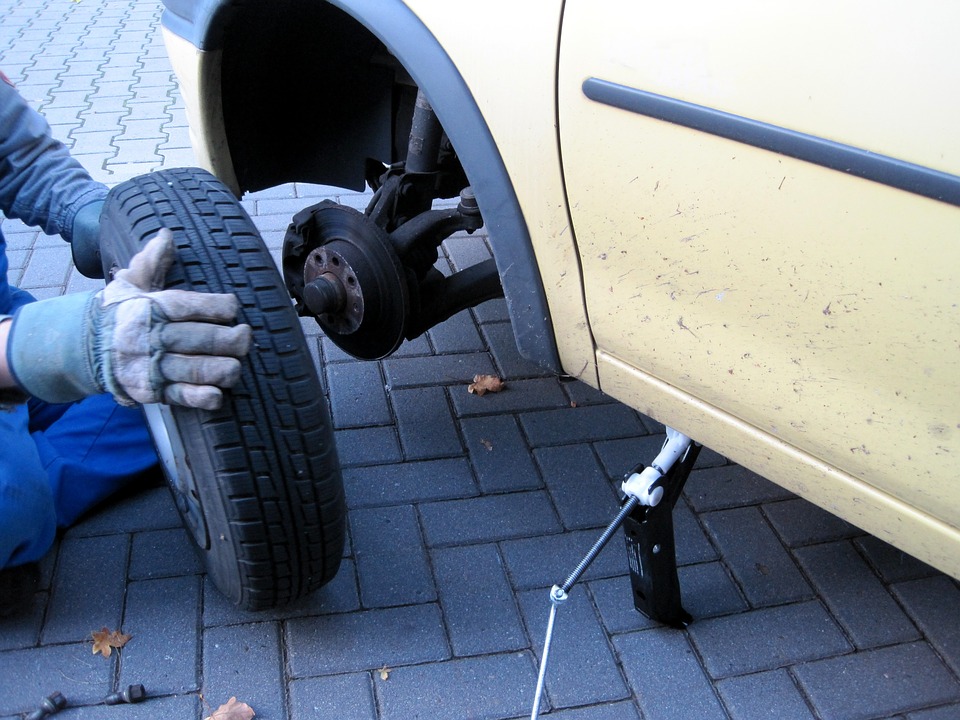 With a relatively small breakdown along the way, you can perform such actions. The detected damage is expanded with an awl, then we take out the tourniquet and attach it to the collar. Then, using a wrench, insert the tourniquet into the punched hole on the outside of the tire. A loop should come out inside the tire, its diameter is larger than the puncture hole. Outside, the tourniquet on the tread is cut with a knife. Can a large cut be repaired this way? No, for cuts that are larger than the diameter of the tourniquet, this method will not work. After inflating, return the wheel back. nine0003
With a relatively small breakdown along the way, you can perform such actions. The detected damage is expanded with an awl, then we take out the tourniquet and attach it to the collar. Then, using a wrench, insert the tourniquet into the punched hole on the outside of the tire. A loop should come out inside the tire, its diameter is larger than the puncture hole. Outside, the tourniquet on the tread is cut with a knife. Can a large cut be repaired this way? No, for cuts that are larger than the diameter of the tourniquet, this method will not work. After inflating, return the wheel back. nine0003
The main thing to know is that the structure of a punctured tire is broken, so is it possible to drive on sealed wheels for a long time? You can't ride for a long time. Patches and other ways do not restore the cord, they are just a way to get to a tire repair or a store. Repairs along the way help you get to your destination and replace the cut tire there.
Is it worth repairing a cut wheel in a repair shop? It's up to you to decide how much you are going to ride with such a wheel.